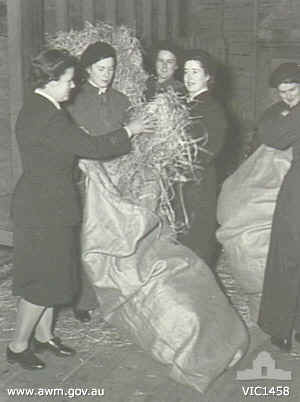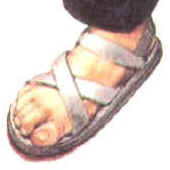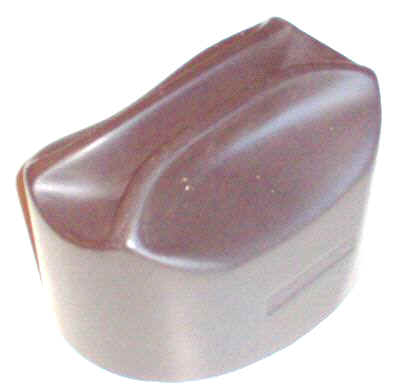 |
|
|||
| What
does EM mean?
EM is an American military term for
'enlisted man'. Someone who is NOT an Officer. It is not often used in
Australia although use is increasing as our language becomes more
Americanized. |
| Is
there a Royal Army in UK and is there a Royal Australian Army?
No. Neither the British Army nor the
Australian Army have the right to use the title "Royal".
However many Corps and Regiments inside those armies are
"Royal". For instance the Royal Army Ordnance Corps (British)
is not the Ordnance Corps of the Royal Army, it is the Army Ordnance
Corps and it has earned the title "Royal". Subtle difference
but important. In the same way the Royal Australian Regiment is part of
the Australian Army but earned the title "Royal" by its own
actions. |
|
Your logo has a slouch hat with a Light Horse badge but no emu plumes. Why? That
image was specifically chosen as it can represent the Light Horse and
the Infantry and other Corps. If the hat was an infantry hat the Light
Horse could feel left out. If the hat had plumes it would be Light Horse
only. I thought it a good compromise image to represent ALL the AIF, and
indeed ALL Diggers, including RAN and RAAF who also wore the slouch
hat, in various forms. |
| What is the "Geneva Cross"?
A red Greek or St. George's cross on a
white ground, used as a symbol by the Red Cross and as a sign of
neutrality. |
| What is
"Freedom of the City"?
Freedom of The City as it is conferred
on a military unit is an honour bestowed by a City Council. It grants
the right to march through the City to the beat of drums, with bayonets
fixed and colours flying. |
| What
is a Waaafery?
It is a barracks used by members of
the Womens Auxiliary Australian Air Force (WAAAF) in WW2. It is a slang
term. |
| What is a palliasse? |
| Why
do we call it "Gallipoli" ?
Gallipoli, called Gelibolu in modern
Turkish, is a town of approx 19,000 in northwestern Turkey. The name
derives from the Greek Kallipolis, meaning "Beautiful
City". It is located on the Gallipoli Peninsula (Gelibolu
Yarimadasi), with the Aegean Sea to the west and the Dardanelles Straits
to the east. It has long been a strategic point in the defense of
Istanbul (Constantinople) and has numerous historic remains. It was
captured by the Ottoman Turks in 1354. It should be noted that the town
itself was not involved in the Gallipoli Campaign. See what it is like
today at Gallipoli
the town |
| What
is a "Q" ship?
Q-ships were converted British WW2
merchant ships with concealed armament, designed to entice U-boats into
surfacing to shell them. Covers would then be dropped and the White
Ensign raised as the ship began to fight back. |
| What
are "cleats"?
Cleats (traction cleats) were metal spikes attached to the sole of Army boots in WW2 to help the Diggers get firm footing on the greasy slippery jungle tracks of PNG. (See photo). |
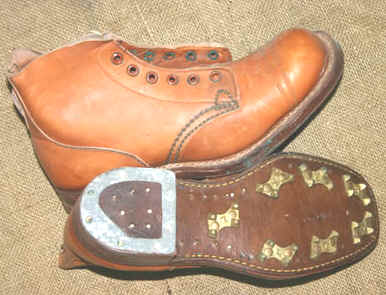 |
| What are Ho Chi Minh sandals? |
How
do they get the shape in a slouch hat?
|
| What is the meaning of Eggs a Cook? | |
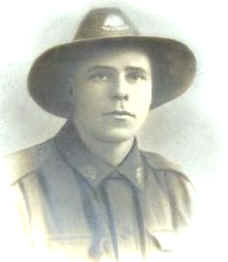 |
There
are two meanings. It was a term used at Gallipoli as a mild exclamation
to indicate surprise.
It was also what the Egyptians nicknamed the Third Division AIF (Monash in command) because at his instructions that Division wore their slouch hat with the brim flat and the badge on the front as in the image on the left. The phrase started with the cry of Egyptian street stall owners offering cooked eggs as a snack. They were available boiled or fried which is where the likeness is supposed to exist. |
| When
you are talking about uniforms, what is "drill"?
Drill
is a strong, durable cotton fabric with a strong bias (diagonal) in the
weave. It can be used unbleached, although it is more often bleached or
dyed. The lighter weights are used in such clothing items as shirts,
safari jackets, blouses, playwear, and martial arts wear. Khaki drill is
made into uniforms; boatsail drill is made into sails for sailing craft
and is unbleached; drill is also made into pocket linings. |
| What
is "herringbone twill?"
Commonly referred to as HBT,
herringbone twill is a weave pattern often used in uniform manufacture
particularly in the USA. It is most often but not always a woolen fabric
and the weave allows a slight amount of 'give' in both directions making
it a comfortable cloth to wear even in tight fitting uniforms. The weave
pattern is named for the skeleton of a herring which the weave is
supposed to resemble. |
|
Serge
is a type of twill
fabric that has diagonal lines or ridges on both sides, made with a
two-up, two-down weave. The worsted
variety is used in making military uniforms, suits, great and trench
coats. It is usually a woollen material. |
| Was
the American Army in Vietnam set up like the Australian Army?
No. Totally different. These rifle platoons were organised into companies, commanded by captains. Each company would normally have three rifle platoons, a mortar platoon, and a rifle HQ consisting of two officers and 10 men. The next step up the organizational structure was the battalion. This unit was commanded by a lieutenant-colonel and consisted of an HQ and an HQ company, and four front-line fighting companies. In 1965, battalions also had a combat support company, responsible for heavy weapons such as 4.2in mortars and flamethrowers. Once in Vietnam, however, it was found that such weapons were a liability rather than an asset, particularly in close jungle terrain, and the men were re-assigned to form a fifth rifle company. Battalions were grouped in threes to form brigades, commanded by full colonels. The main tactical formation was the division, commanded by a major-general, comprising three brigades as well as artillery and other support elements. By December 1965, five US Army formations - the 173d
Airborne Brigade, the 1st Brigade of the 101st Airborne Division, the 1st Infantry Division, the
1st Cavalry Division (Airmobile) and the 3d Brigade of the 25th Infantry
Division - had been deployed to Vietnam. They were responsible for the security of existing bases
and lines of communication, and for taking the war to the enemy in the war zones north of Saigon and
in the Central Highlands. |
| Was
the "body count" in Vietnam an accurate measure of success?
Did American units deliberately exaggerate the number of enemy soldiers they claimed to have killed to enhance their reputation? |
| Was
the requirement for changing from Militia to AIF 65% or 75%.
In February 1942 regulations were
changed to allow members of the militia to volunteer for service with
the AIF, which meant being able to be sent anywhere in the world, but
they would stay with their existing units. If 65 per cent of the establishment
strength, or 75 per cent of the actual strength, of a unit
volunteered for the AIF, that unit then became an AIF unit. |
| Some
Nazi badges have different leaves in their wreaths. Why?
Oak leaves are a symbol of strength.
Laurel leaves, ever since ancient Greek athletes were first crowned with
them, represent victory, excellence and achievement. The Nazis sometimes
had both on a badge. |
| Who
used the double headed eagle on their badges?
Austria-Hungary, also known as the
Austro-Hungarian Empire, Dual Monarchy or k.u.k. Monarchy or Dual State,
was a dual-monarchic union state in Central Europe from 1867 to 1918,
dissolved at the end of World War I. The double headed eagle is a common
symbol in heraldry and vexillology. Several Eastern European nations use
this symbol today, having adopted this symbol from the Byzantine Empire. |
